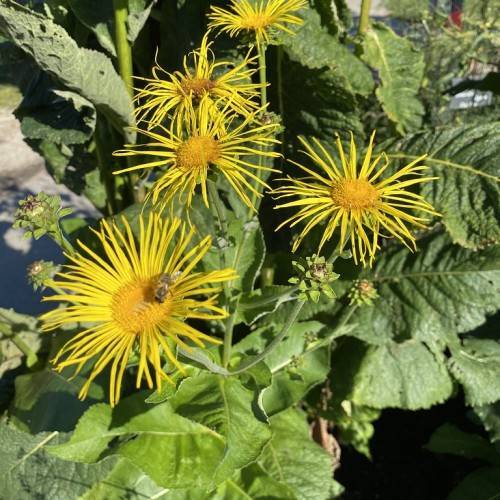
elecampane
Inula helenium
Cycle:
Herbaceous Perennial
Watering:
Average
Hardiness Zone:
3 - 7
Flowers:
Flowers In Summer
Sun:
Full sun
Fruits:
Fruits In Summer Ready In Fall
Leaf:
Yes
Growth Rate:
High
Maintenance:
Low
Drought Tolerant:
Yes
Care Level:
Medium
watering
When watering elecampane, it should be done on an as-needed basis. It is best to allow the soil to become slightly dry between waterings. During the active growing season (spring and summer), the soil should never become too dry for an extended period of time. In general, 1-2 inches of water should be applied each week. However, during especially hot, dry periods, supplemental watering may be needed. In the winter months, reduce the frequency of watering to every other week or only when the soil begins to dry out. Avoid overwatering as this can cause root rot.
sunlight
Elecampane prefers a full-sun location and should receive at least 6-8 hours of sunlight per day. During the summer this amount may increase, but during the winter the amount should decrease to ensure the plant does not suffer from wilting or burn. If the plant is receiving too much sunlight, it should be grown in a shadier area with indirect light. It is important to avoid direct sun exposure during the hottest and brightest parts of the day, such as from noon to late afternoon.
pruning
Elecampane (Inula helenium) is often pruned in late winter or early spring, just before the new growth appears. Pruning provides the opportunity to shape the plant, remove any dead or damaged growth, and thin out overcrowded stems. Prune lightly because Elecampane is a fast-growing species, and can quickly recover from pruning. Start by removing any dead, diseased, or damaged stems near the base of the plant. Thin any crowded or overlapping stems and reduce any straggly growth that is too long or not flowering. It is not generally recommended to reduce the size of an established Elecampane too drastically.
